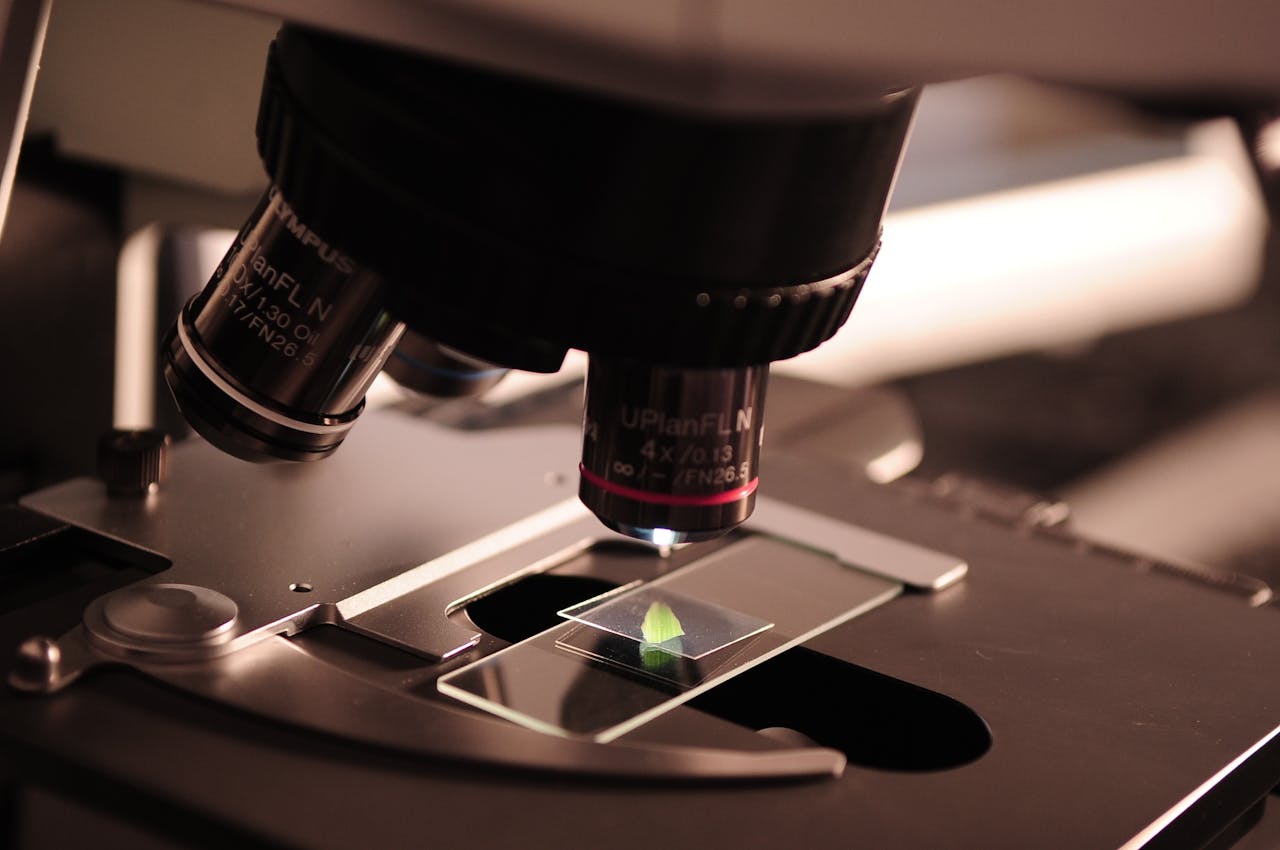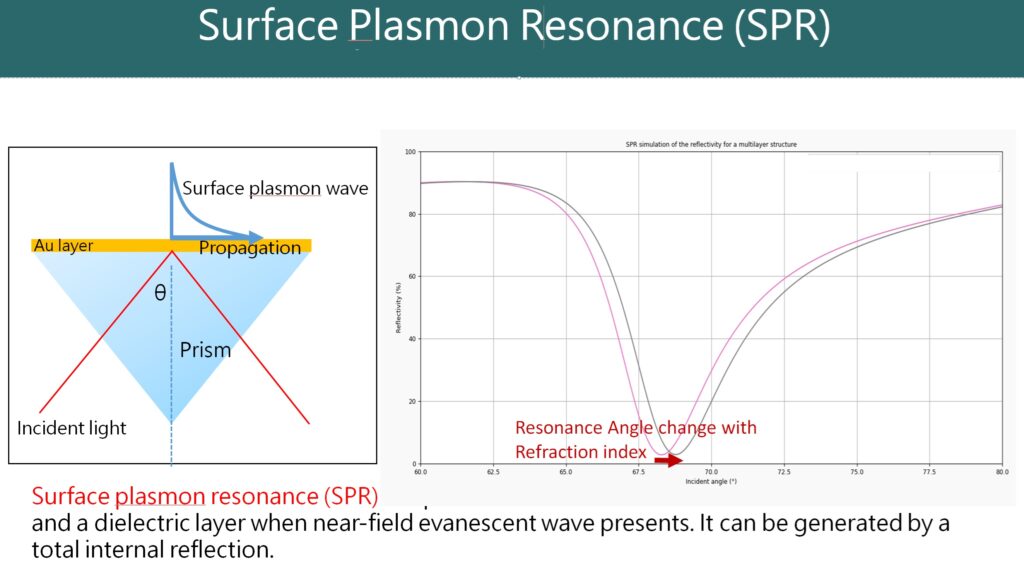
What is SPR(Surface Plasmon Resonance)
When light passes through the metal and hits the metal and total reflection occurs at the metal-metal interface, an evanescent wave (Evanescent Wave) will be generated at the interface. When the evanescent wave matches the metal interface plasmon resonance conditions, an evanescent wave will be generated. Surface plasmon resonance. Incident light interacts with surface plasmons, and the information on the state changes of the reflected light allows us to analyze the phenomena occurring on the surface. This technology does not require calibration of the object to be measured, can provide instant measurement results, and is very sensitive to changes in the refractive index of the measurement environment. Therefore, it is widely used in chemical or biomedical testing.The figure below is a schematic diagram of a common Kretschmann Configuration device in SPR. The incident light from the bottom to the metal film produces total reflection. When the incident angle is the resonance angle, the evanescent wave generates surface plasmon resonance at the interface to be measured on the other side of the gold film. The energy of the light is transferred to the plasmons, so the intensity of the reflected light drops dramatically. Changes in the refractive index of the interface to be measured will cause changes in the resonance angle, and changes in the interface can be known by measuring the changes in the resonance angle.
